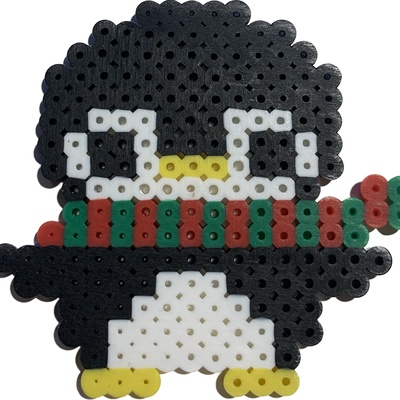

“Gnome Power Statistics”, which you can install from Discover Store in Desktop mode, will tell you the battery’s health.
If it’s an earlier build of Steam Deck, the battery is probably glued in like hell. I think Valve eased up on that later on.
aka @[email protected]


“Gnome Power Statistics”, which you can install from Discover Store in Desktop mode, will tell you the battery’s health.
If it’s an earlier build of Steam Deck, the battery is probably glued in like hell. I think Valve eased up on that later on.


Clair’s default graphics on Deck are unbelievably ugly, doing the SteamDeck=0 thing is mandatory. I was never great with reaction games, so the slight framerate loss means I go from “missing counters 98% of the time” to “missing counters 98.2% of the time”. I’ll take that.
If Hell is empty, then where do all of the souls too poor to buy Genuine Church Indulgences go?


Haven’t tried these out on a calibrated six year old, but some that I liked which might be in the ballpark are Tinykin, a Short Hike, Smurfs Vileleaf, Loddlenaut, Lil Gator Game, Little Kitty Big City, Costume Quest, What the Golf/Car.


Luanti is all the minecraft a kid needs these days



I think the xray is from ifixit? I nudged trimming it until the port and volume up button lined up just so.
I don’t think that systemd has a whole lot of sleep-management architecture that does what you want? What it does have is the ability to do “suspend-then-hibernate”, which would suspend for some set time, wake up, and flip over to hibernating. I’ve set that up on Debian (not too hard), Ubuntu (pure hell), haven’t tried on SteamOS.
What you want is technically possible without changing the hardware or firmware, but I think it would take an unreasonable amount of systemd coding.
https://wiki.archlinux.org/title/Power_management/Suspend_and_hibernate#Changing_suspend_method


I don’t think that dxvk is a thing that you’re supposed to pull in on its own. Any recent version of Proton (and especially ProtonGE) brings its own up-to-date copy of it.


Or, you might want to go to the studio’s original title, Sunshine Heavy Industries. It’s pretty much just building spaceships out of legos.


It’s more than enough to make HL3 a Steam exclusive. And make it run well on the Deck. If Valve really wants to gild the lily, they could put a little side-story just for the Deck’s controls. A follow-up to Aperture Desk Job, perhaps.
If y’all want your own copy of Tunic, it is available in a new itch.io charity bundle.


What’s wrong with “cp -r”?
As far as “having a second SD slot to facilitate the copy” goes, Anker makes decent card readers.
Try messing with ~/.var/app/io.treetubeapp.FreeTube/config/FreeTube/settings.db , in the “bounds” line.
It doesn’t look like Freetube had a --fullscreen option, so you can’t tell steam to just do that.


Steam’s “immutable” system isn’t that bad. It will revert a lot of stuff during OS updates, but Stable doesn’t go through that very often. I put all of my changes into a shell script and reapply it when that happens.


Add anything with sonic in the name. Like SRB2:Persona.
The best place to buy Samsung cards is from Samsung’s site, the best place to buy Sandisk cards is from … Western Digital. Sometimes they even have sales that approximate Amazon.
It’s pretty safe to assume that you will get a real card from the horse’s mouth.


Apple’s solution is to integrate a heating strip with the glue. Put some power into it, and the glue warms up and releases.


I wouldn’t condemn Anker after whatever IoT camera thing, everything in that space sucks. As far as I know Anker makes good power bricks, and I’ll trust their stuff as long as it isn’t in The Cloud.


For such a “stripped down” OS to fit in a 5GB / partition, it is very funny that they included printing but just left it turned off.
Little pro-tip - I got a Corsair drive and tried putting it in external enclosure to copy to it, that didn’t work.
These small Nvme drives are dram-less, so they borrow some memory from the host system. All of these drives have a fallback mode when they can’t borrow host memory, which is slower. Apparently, the fallback mode is so well programmed that drive can crash during large write sessions.
It worked just fine once I put the new drive inside the Deck, and pulled data from the old drive sitting in the enclosure instead.